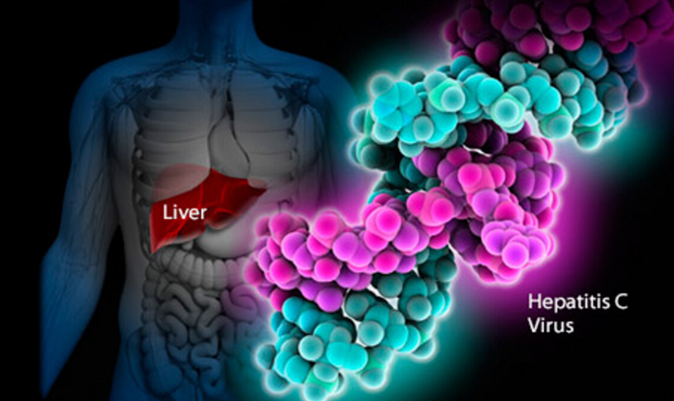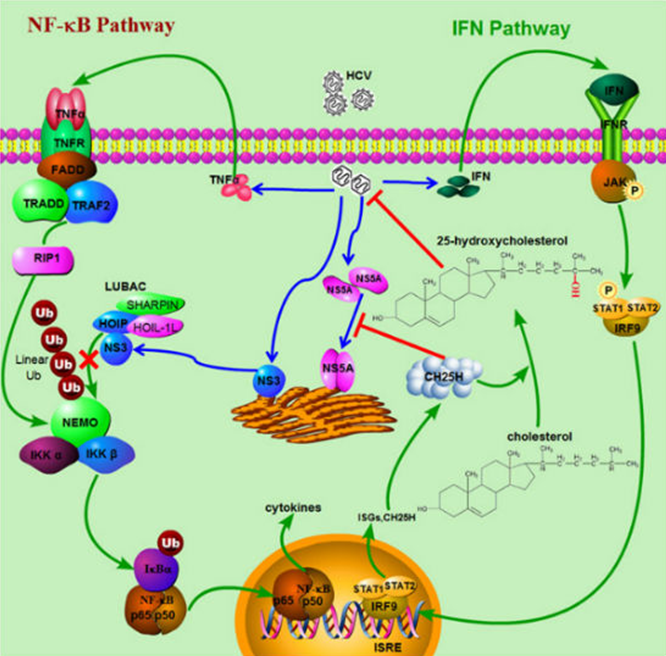Introduction:
HCV (hepatitis C virus, HCV) Hepatitis C is caused by the pathogen of infectious diseases, serious harm to human health. It is the body's natural immune response against viral infection first line of defense. After HCV infected host cells, which may be natural immune system to recognize and activate the interferon signaling pathways downstream of a series of further induce interferon-stimulated gene expression and play a direct anti-viral function.

HCV (hepatitis C virus, HCV) Hepatitis C is caused by the pathogen of infectious diseases, serious harm to human health. It is the body's natural immune response against viral infection first line of defense. After HCV infected host cells, which may be natural immune system to recognize and activate the interferon signaling pathways downstream of a series of further induce interferon-stimulated gene expression and play a direct anti-viral function. But also through a variety of strategies HCV inhibition and evade the host antiviral activity, maintaining its replication in the target cells, resulting in persistent infection of the host. Currently about 1.3-1.7 million people worldwide carry HCV, illustrate this virus has established an effective mechanism to evade and resist the host immune response, but many of which molecular mechanism is unclear. Therefore, further study of the interaction between the virus and the host innate immune system, will help us to understand and realize HCV to evade the immune response molecular mechanisms of persistent infection has important significance for the design and development of drugs.
November 17 , Science Signaling journal published online group , Institute of Biophysics , Chinese Academy of Deng Hongyu entitled The hepatitis C virus protein NS3 suppresses TNF-α-stimulated activation of NF-κB by targeting LUBAC research revealed HCV by inhibition of TNF-α -induced NF-κB activation and implementation of a new mechanism of immune escape .
The main research directions Deng Hongyu group of oncogenic viruses interact with the host. Clinical data suggest that hepatitis C virus infection in the blood have a higher concentration of tumor necrosis factor TNF-α, which is a cytokine produced by macrophages, monocytes and other activation produced, usually activates in a natural the immune response plays an important role in NF-κB signal to help the body resist viral infections, but hepatitis C virus infection in vivo NF-κB signal is at a suppressed state. Study Deng Hongyu Task Force shows that this puzzling clinical phenomenon called NS3 of HCV non-structural proteins. LUBAC (linear ubiquitin chain assembly complex) is a key regulatory protein complex NF-κB signaling pathway, through a combination of linear and NEMO ubiquitination and IKK complexes NEMO, thereby activating NF-κB signal downstream. The HCV NS3 protein by interacting with LUBAC, competitively hampered combination LUBAC with NEMO, so not linear NEMO ubiquitination, eventually leading to NF-κB activation is inhibited, thereby helping to complete HCV immune escape. In previous studies, the research group also identified cholesterol 25-hydroxylase (CH25H, an interferon inducible gene product) of anti-HCV functions and clarify the mechanism of action (Chen et al., Scientific Reports 2014). The work reveals the wonderful game between the virus and the host innate immune system.

Figure: Wonderful game between the hepatitis C virus and the host innate immune system
(Chen et al., Science Signaling 2015; Chen et al., Scientific Reports 2014)。
Reference:
The hepatitis C virus protein NS3 suppresses TNF-α–stimulated activation of NF-κB by targeting LUBAC
DOI: 10.1126/scisignal.aab2159
Souce: NovoPro 2015-12-03
